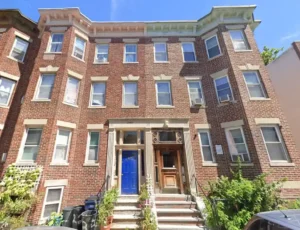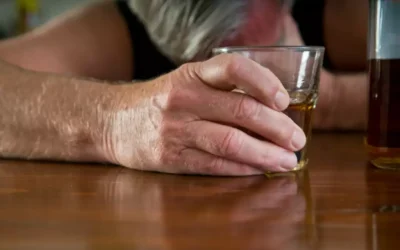
This indicates the need for greater health education of drug users and the implementation of relapse and overdose death prevention programs. Sober living houses can assist in educating drug users and reducing the chance of relapse. One study into Oxford House recovery homes found that they reduce relapse by providing closer monitoring and referring additional services to residents with a history of severe addiction.
- Health among these different areas is addressed using various resources available through sober living houses.
- Many studies have shown that the best-practice rehabilitation treatment provides continuity of care post-discharge.
- The evening consists of activities, such as group or individual meetings, 12-step meetings, therapy, or house meetings.
- By adhering to legal requirements, securing funding, and focusing on providing quality care, you can establish a facility that significantly impacts your community’s well-being.
- Some halfway houses may conduct random drug testing for their residents to ensure they are always sober, while others provide mental health services to their residents.
WE ACCEPT MOST PPO INSURANCE

Here, you’ll find individuals at various stages of their recovery, each contributing to a collective reservoir of hope, strength, and encouragement. This network is pivotal in reducing feelings of isolation, often a trigger for relapse. This blend of independence, accountability, and community support is pivotal in transitioning from rehabilitation settings to everyday life. Residents are often required to seek employment, further their education, or engage in volunteer work. This aspect of sober living ensures that you not only work on staying sober but also on rebuilding your life and securing a stable future. It’s worth noting that many sober living homes are covered under insurance plans or government funding.
What Are Sober Living Homes?
Many studies have shown that the best-practice rehabilitation treatment provides continuity of care post-discharge. Sober homes allow individuals to continue with elements of their recovery treatment even after their formal rehab program has finished. This continuation of support, motivation, and, in some cases, therapy will significantly enhance their chance of long-term sobriety. The goal is to transition to an independent lifestyle, free of substance abuse and addiction. By immersing yourself in a supportive sober living community, you’re not just navigating the recovery journey with the assistance of others but also actively contributing to the shared goal of lasting sobriety. This collective effort not only makes the process more manageable but also enriches your experience with meaningful relationships that can last a lifetime.
What does it take to move beyond addiction—and stay there?
- Residents in outpatient treatment may also report for therapy and counseling sessions.
- Include information on the licenses, permits, and zoning laws that apply to sober living homes in your jurisdiction.
- Residents in a Massachusetts sober living program enter into the program voluntarily and therefore can leave the sober home willfully.
- Addiction is a chronic and relapsing brain disorder with relapse rates of between 40% and 60% similar to the relapse rates of other chronic health conditions.
- Recovery Residences (RRs) are organized into four categories, or “levels,” by the NARR.
It’s a continuous process that often requires longer-term support to solidify and maintain the skills and mindsets learned during recovery. This is where a boston sober homes house for extended stays can make a significant difference. A supportive and structured environment is a cornerstone of the success of sober living houses. While some sober living homes may incorporate evidence-based therapies and holistic approaches, the primary emphasis is fostering a community prioritizing healing and well-being. Often addiction treatment services involve withdrawal management services (detoxification) and inpatient rehabilitation, followed by ongoing outpatient care.
Effectiveness of Going to a Sober Living House

They also tend to be affiliated with addiction treatment centers that provide outpatient programs. Most homestays will cost between $500 to $1,200 monthly, with all services included. But they can be anywhere between $300 and $2,000, depending on the neighborhood and amenities.

- You can also visit the websites of sober living homes in your area to find one that suits your needs.
- If you or someone you know has recently quit drinking alcohol and is now sober—congratulations, quitting alcohol can be a long and difficult process.
- Most treatment facilities can help determine if your insurance is eligible for outpatient rehab.
- The program used many of the same principles as Alcoholics Anonymous and soon became increasingly professionalized.
- Another study published in the same journal suggested that sober living homes can provide a supportive environment that helps individuals in recovery maintain sobriety and improve their overall quality of life.
You can also explore our rehab directory to find treatment options, including sober living homes, near you. At this level, it is often mandatory for residents to participate in community meetings, house meetings, mutual support groups, buddy systems, and outside clinical appointments. A sober living home is a temporary transitional living space for people recovering from substance abuse. It’s a safe haven that keeps you away from triggers and minimizes the risk of relapse.


Residents of a sober house are required to pay rent, attend school or work, continue regular meetings at support groups and take part in regular household chores. All sober living homes have a zero-tolerance policy regarding the use of drugs or alcohol. Usually, residents have recently completed inpatient or intensive outpatient treatment for substance use addiction.
Inpatient Treatment
Substance abuse may have taken years of your life, so sober living homes can help you regain them. By Julia Childs Heyl, MSWJulia Childs Heyl, MSW, is a clinical social worker and writer. As a writer, she focuses on mental health disparities and uses critical race theory as her preferred theoretical framework. In her clinical work, she specializes in treating people of color experiencing anxiety, depression, and trauma through depth therapy and EMDR (eye movement desensitization and reprocessing) trauma therapy.
- Sober living homes and halfway houses are both types of residential environments designed to support those in recovery from addiction.
- Residents who abide by these guidelines have a higher chance of avoiding a relapse while living in a sober home.
- This enables residents to accept responsibility for themselves and their future and establish a daily routine and purpose.
- You become part of a recovery-focused community to improve your social health.
- On the other hand, residents of halfway houses are typically parolees or persons mandated to live there per court order or as a sentencing alternative.
- If you’re having a hard time adjusting to a sober life, reach out to a mental health professional who specializes in addiction and substance use.

